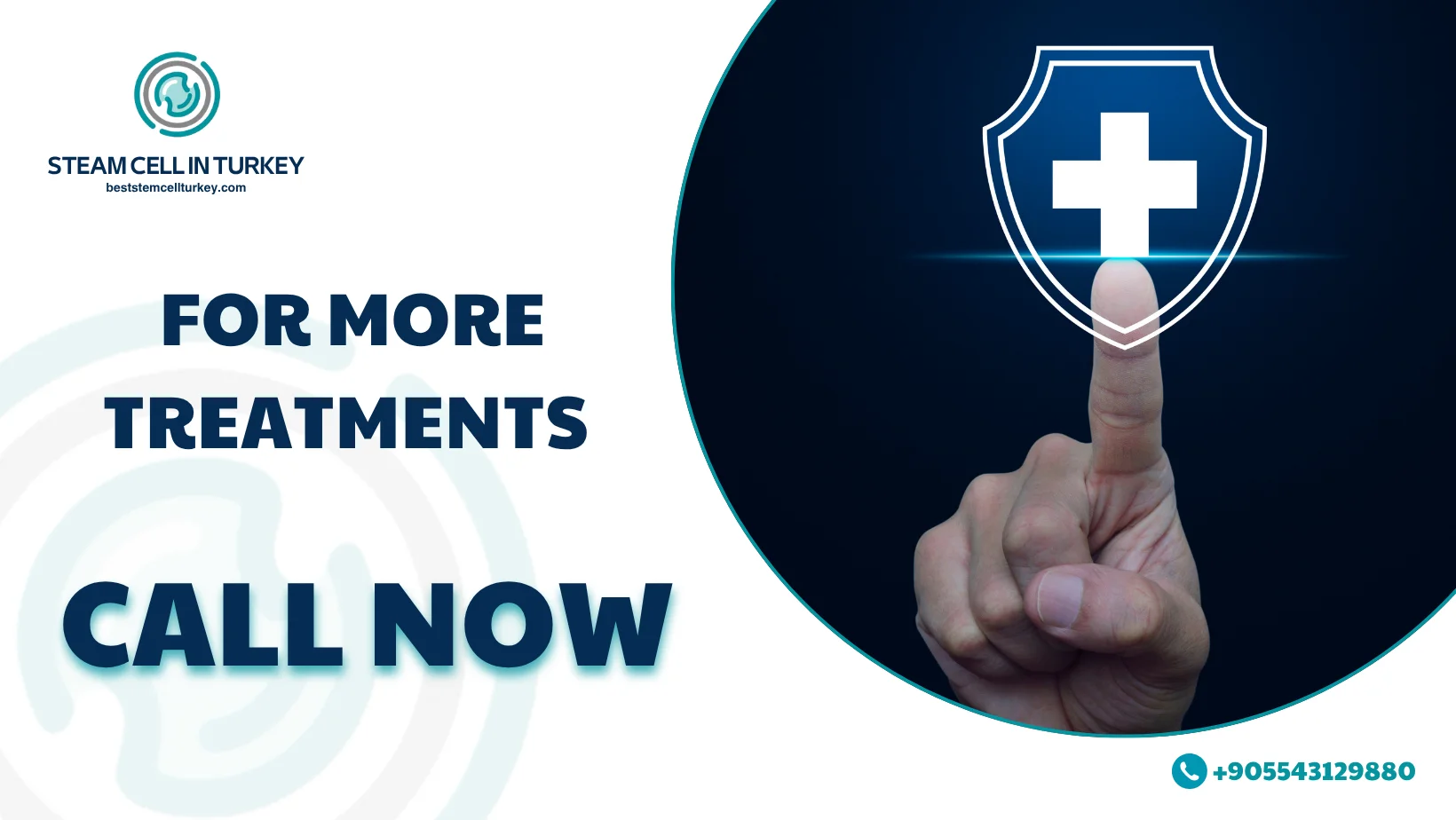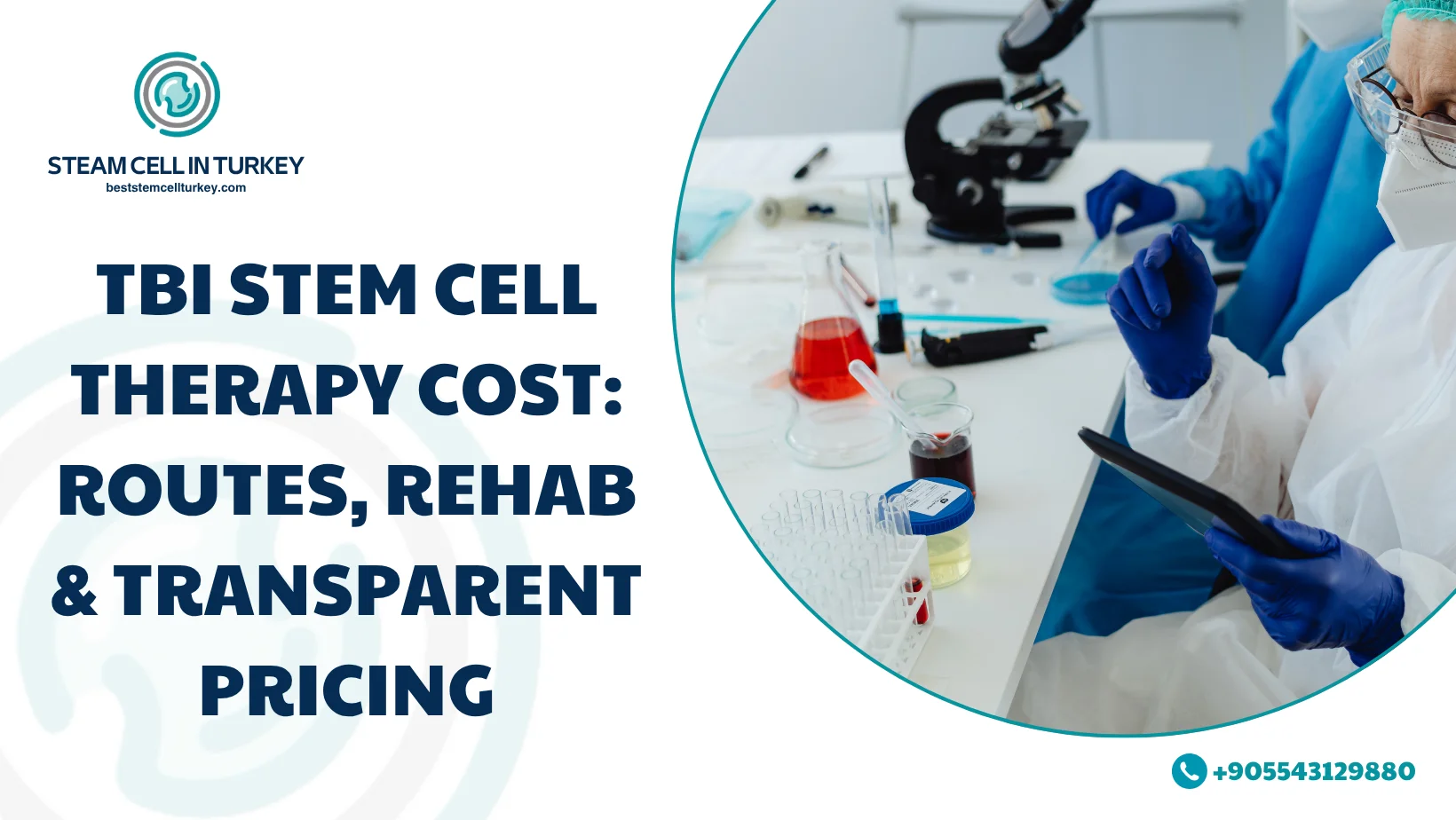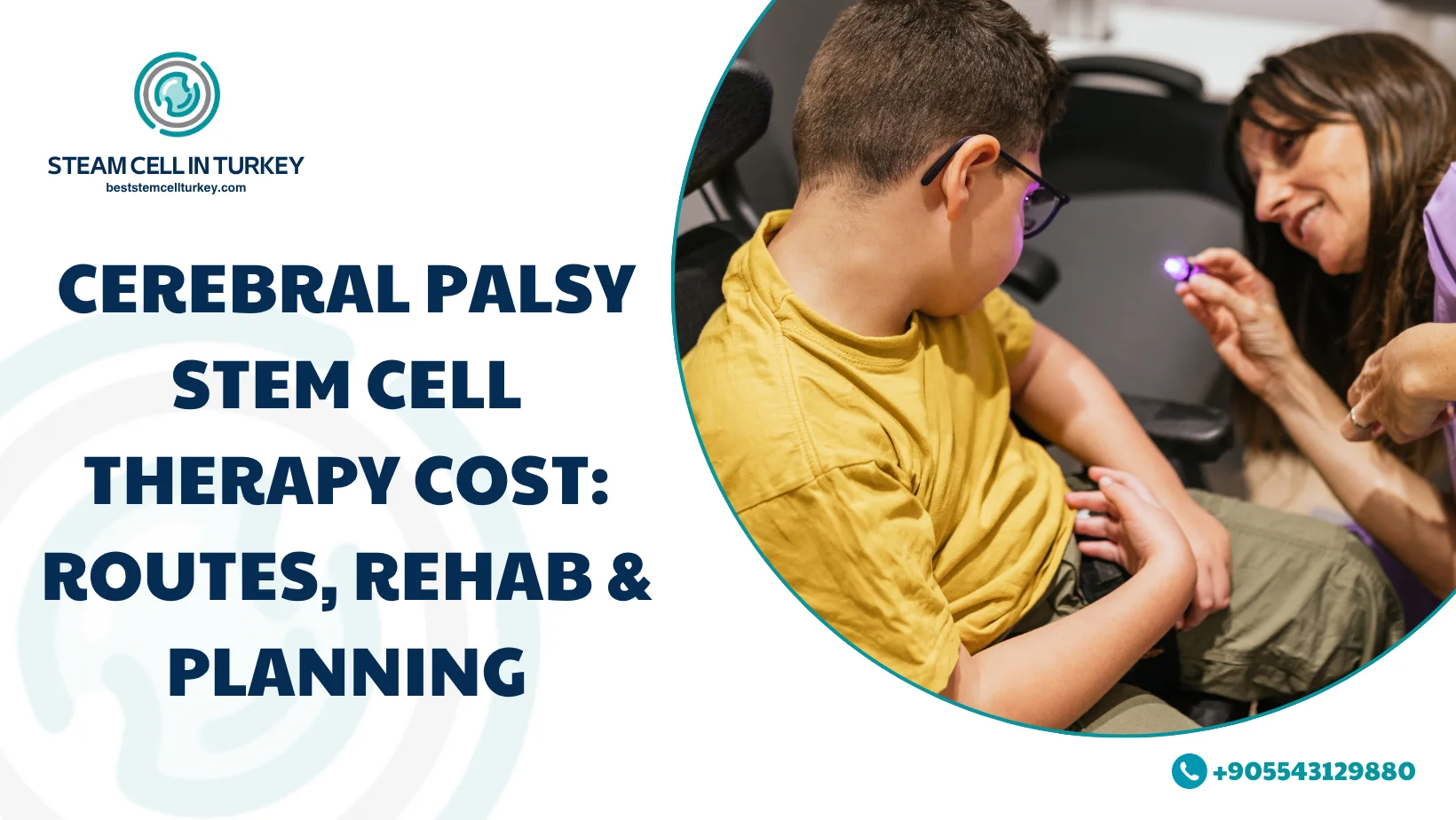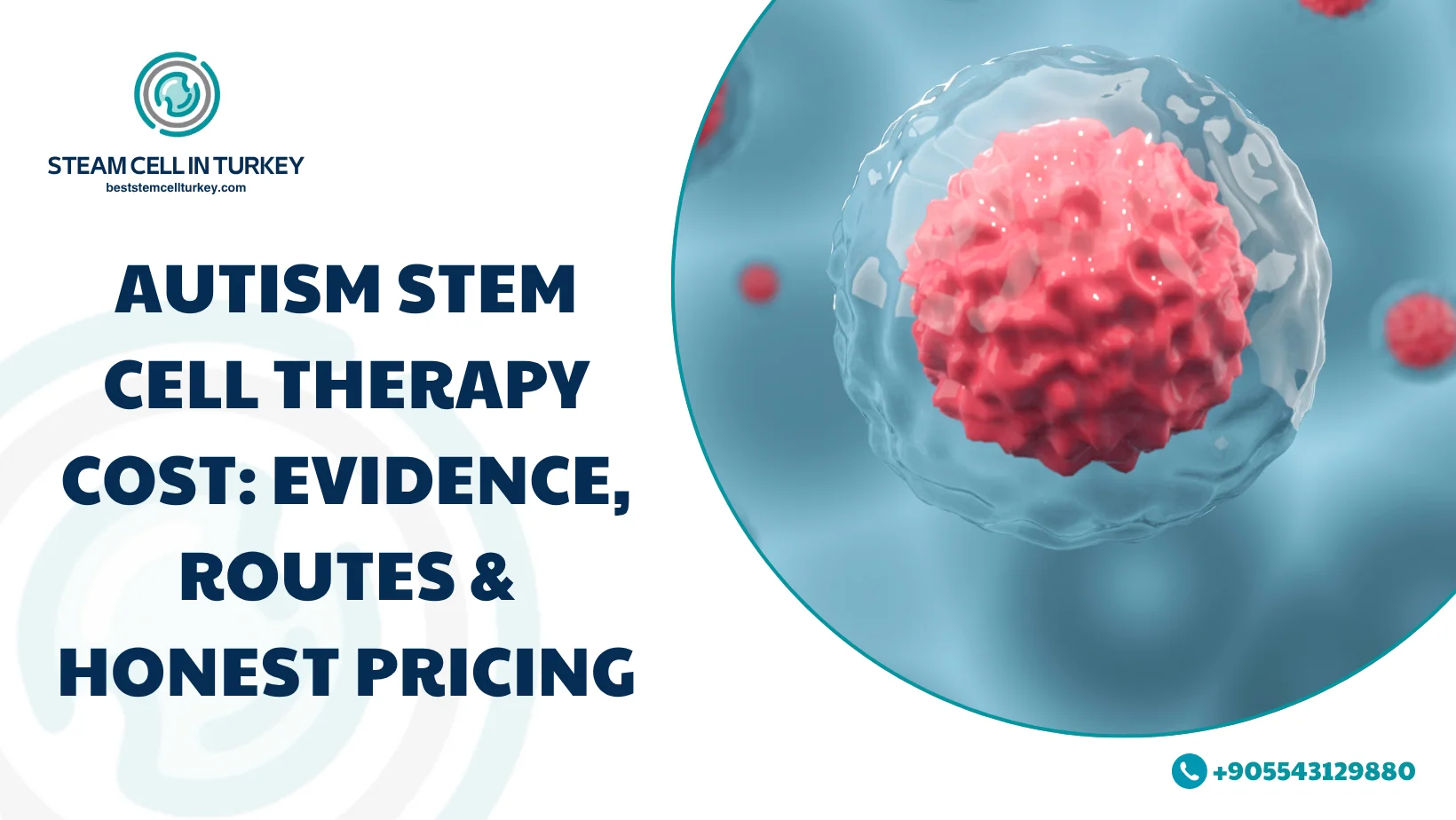When people ask for brain injury TBI stem cell therapy cost, what they really need is a map: what the price includes, why quotes differ so much, and how to tell science from sales. This guide breaks your total bill into verifiable parts—therapy platform, delivery route, GMP/COA quality paperwork, dose & session design, rehab bundle, and follow-up—then ties each part to what regulators and reviewers actually say.
The Six Things You’re Really Paying For

1- Platform (what the “stem cell therapy” actually is)
Most private quotes involve mesenchymal stromal cells (MSCs) (e.g., umbilical-cord or bone-marrow derived) positioned as investigational support for neuroinflammation and repair. Hospital or trial settings may explore neural stem cells (NSCs) or other products—access is stricter, documentation heavier, and facility lines larger. High-quality reviews of TBI treatments describe promising but still-investigational signals and call for larger, controlled trials before routine use.
2- Delivery route (biggest logistics driver)
- IV (intravenous): clinic session; lowest facility cost.
- IA (intra-arterial): cath-lab imaging and specialist time increase the bill.
- IT (intrathecal/lumbar puncture): day procedure; anesthesia/monitoring and recovery space add a line item.
- Intralesional/intracerebral: neurosurgical delivery → highest OR/anesthesia costs; usually protocol-specific.
Responsible providers justify the route in writing for your goals and risk profile, not with marketing.
3- Manufacturing quality (non-negotiable paperwork)
You should receive, before you pay, a current GMP certificate (valid dates/scope) and a batch Certificate of Analysis (COA) listing identity markers, viability, sterility/endotoxin, mycoplasma, and cell count per vial, plus storage/handling and chain-of-custody. This is aligned with ATMP expectations in the EU and with ethical clinical translation standards from the ISSCR. No documents, no deal.
4- Dose & session design (the math behind the number)
Quotes should show dose in “million cells”, session count, and spacing (e.g., two to three staged visits). If exosomes appear on a price sheet, demand the same quality dossier—and a written regulatory status; FDA explicitly flags exosome products marketed to patients as unapproved.
5- Rehab bundle (the engine that converts price into progress)
The largest returns for TBI usually come from structured neuro-rehab—cognitive rehab + PT/OT, vestibular therapy, vision therapy, and sleep/headache programs—timed around procedures. Ask for named therapies, hours, and objective measures (MoCA/MMSE, neuropsych domains, balance/gait tests).
6-Follow-ups & safety (predictable aftercare)
Expect a schedule (e.g., 2/6/12+ weeks), standardized scales, telehealth checkpoints, and a written adverse-event pathway. U.S. FDA consumer pages emphasize truthful risk/benefit communication and reporting routes; your paperwork should reflect that.
Price anatomy (line items you should see, with examples)
-
Clinical intake: neurology consult, MRI/CT review, seizure history/meds, vestibular and vision screening, sleep/mood checks; baseline measures (MoCA/MMSE, symptom scales).
-
Procedure:
-
IV session: clinician time, sterile supplies, infusion chair, observation.
-
IA session: cath-lab slot, imaging technician, interventionalist, recovery.
-
IT session: anesthesia, lumbar puncture kit, recovery lounge, monitoring.
-
Intralesional/intracerebral: OR time, anesthesia team, imaging, bed/ICU contingency.
-
-
Biologic: dose in million cells per session; thaw/prep fee; waste/return policy; GMP + COA packet attached.
-
Rehab block: e.g., 12–20 hours across cognitive rehab, PT/OT, vestibular, ± vision therapy; home-program setup; interim tests.
-
Follow-up: telehealth at week 2/6/12; repeated scales; side-effect surveillance.
-
Travel/companion: transfers, quiet hotel (sensory-friendly), interpreter; caregiver coaching.
Providers with efficient pathways often bundle procedure + rehab + lodging at lower total than à-la-carte.
Route & risk chooser
-
IV (simplest logistics): good for staged dosing and minimal downtime; you’ll pay mostly for cell product + chair time.
-
IA (targeted delivery): adds cath-lab and imaging; clarify why IA fits your lesion pattern/goals.
-
IT (CSF access): common in neuro protocols; plan fasting/sedation, recovery time, caregiver support; price rises with anesthesia/monitoring.
-
Intralesional/intracerebral: niche indications; expect the highest facility costs and stricter inclusion criteria.
Whichever you choose, route rationale must be written and tied to your priorities (cognition, headaches, balance, executive function, return-to-work).
The 60-second credibility screen (print this)

-
Approval status: Does the clinic clearly state that patient-marketed stem-cell/exosome products for TBI are not FDA-approved? If not, stop.
-
Documentation: Do you receive GMP certificate + batch COA (identity, viability, sterility/endotoxin, mycoplasma, cell count) before payment? If not, stop.
-
Route & dose: Are route, dose (million cells), and session count written out?
-
Rehab plan: Are specific hours for cognitive rehab, PT/OT, vestibular/vision listed with outcome metrics?
-
Adverse-event process: Is there a written pathway (24/7 contact) and reporting guidance?
-
Ethics: Does the proposal reference ISSCR guidance (truthful claims, consent, oversight)?
Any missing item → ask for a revised quote or walk away.
Budget smarter (and safer)
-
Ask for apples-to-apples math: cost per million cells, separate facility/anesthesia fees, named therapy hours.
-
Bundle strategically: integrated rehab + lodging often costs less overall and improves adherence.
-
Schedule around symptoms: quieter rooms/daylight control help post-TBI headaches and sensory load—worth the small incremental cost.
-
Lock contingencies: written rescheduling and product-handling rules (what if you travel but a viral illness delays a session?).
-
Avoid hype-tax: exosome add-ons without robust documentation rarely justify the premium.
Why many patients choose Best Stem Cell Turkey
Choose documentation over hype. Pair verifiable GMP/COA, the right route, and an intensive rehab bundle with clear follow-ups with Best Stem Cell Turkey—then lock your dates and payment path to start sooner and safer.
-
Best price at the highest quality: globally competitive quotes backed by GMP safeguards and a readable COA delivered before you travel.
-
Route clarity: explicit IV/IA/IT/intralesional plan with anesthesia/imaging line-itemed and justified.
-
Rehab-first model: integrated cognitive + PT/OT + vestibular + vision therapy blocks, synced to sessions, with measurable goals.
-
Frictionless logistics: time-zone-smart scheduling, secure uploads, quiet hotels, interpreter, and financing paths.
→ Book a Free Consultation · See Financing · Compare Packages
FAQs about TBI Stem Cell Therapy Cost

Is TBI stem cell therapy proven?
Human data are encouraging but not definitive. Reviews report feasibility and functional signals but urge larger, controlled trials before broad clinical adoption. Plan with documentation, rehab, and realistic goals.
Which route is best?
It depends on goals, lesion pattern, and risk tolerance. IV is simplest; IA/IT add facility/anesthesia; intralesional is most invasive. Your provider should justify the choice in writing.
Can exosomes replace cells for cheaper?
No—exosome products marketed to patients are not FDA-approved; treat claims carefully and demand full documentation and status in writing.
What paperwork must I have before paying?
GMP certificate + batch COA (identity, viability, sterility/endotoxin, mycoplasma, cell count), storage/handling details, chain-of-custody, and a clear adverse-event reporting route.
Will rehab really change outcomes?
For TBI, structured neuro-rehab is where day-to-day gains are forged. Your plan should list therapies, hours, and objective metrics (MoCA/MMSE, neuropsych domains, balance/gait tests).
Medical Sources
-
FDA — Important Patient & Consumer Information About Regenerative Medicine Therapies (unapproved uses, harms, reporting). U.S. Food and Drug Administration
-
FDA — Consumer Alert on Regenerative Medicine Products (including stem cells & exosomes) (marketing cautions; status). U.S. Food and Drug Administration
-
EMA — Advanced Therapy Medicinal Products (ATMP) Overview (cell therapies are medicines with quality systems). (EMA)
-
EMA — Guidelines relevant for ATMPs (cell-based products; stem-cell reflection paper). (EMA)
-
ISSCR — Guidelines for Stem Cell Research & Clinical Translation (2021) and updates. الجمعية الدولية لأبحاث خلايا الجذع+1
-
Traumatic Brain Injury & Stem Cells — 2024 narrative/systematic review (feasibility; need for RCTs). PubMed
-
TBI stem-cell review (2025) — Consolidates human data; emphasizes promise + trial needs. SpringerOpen
-
Exosomes regulation review (2024) — Regulatory landscape; cites FDA consumer alert; standardization/safety issues. PMC
Ready to plan with confidence?
→ Book a Free Consultation
→ Explore Financing Options
→ contact with us via what’s up



